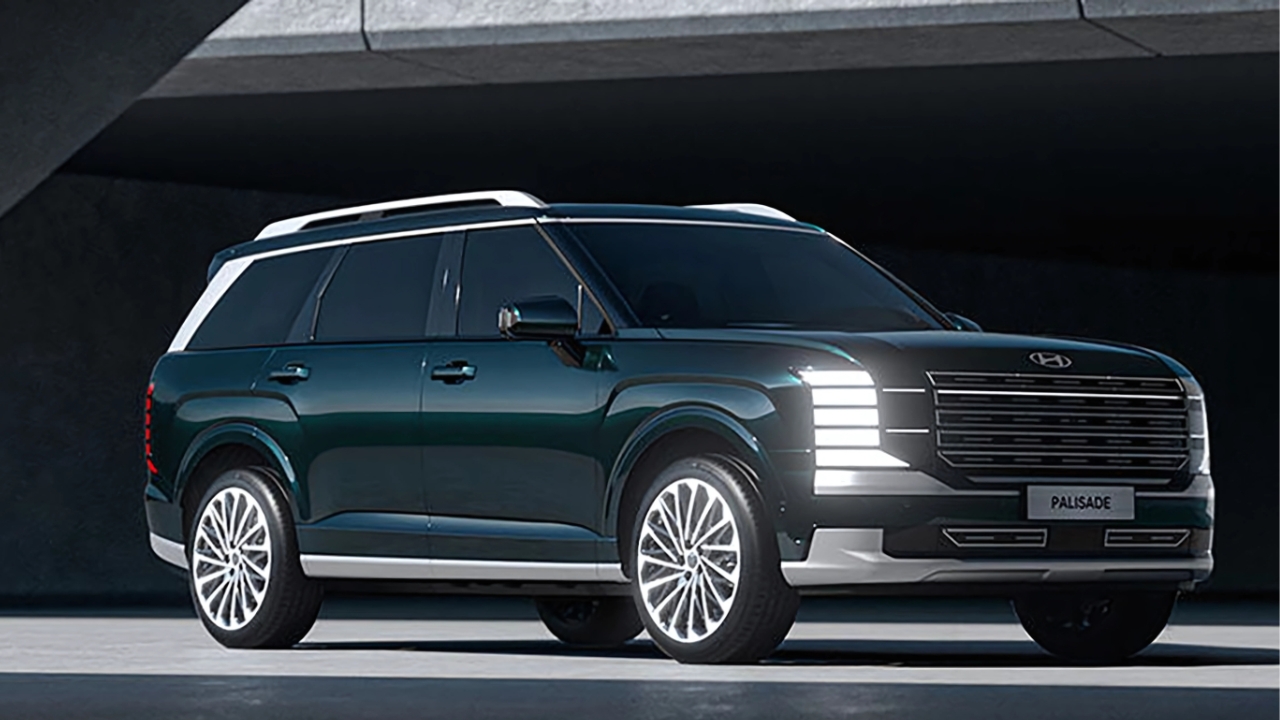The 2026 Hyundai Palisade : If you’re in the market for a family-friendly three-row SUV, the 2026 Hyundai Palisade just became a lot more interesting. After nearly half a decade of success with its current setup, Hyundai has decided to shake things up in a meaningful way. The Korean automaker is saying goodbye to both the 3.8-liter V6 engine and the diesel option, replacing them with more efficient four-cylinder powertrains, including an impressive hybrid system.
This isn’t just another minor model year update. We’re talking about a complete rethinking of what powers one of the most popular family SUVs on the market today.
What This Actually Means for Your Family
Let’s cut through the technical jargon and talk about what really matters. The new Palisade comes with two main engine options: a turbocharged 2.5-liter four-cylinder producing 277 horsepower, and a hybrid version that bumps power up to an impressive 330 horsepower. That hybrid option is particularly noteworthy because it actually delivers more power than the outgoing V6 while using less fuel.
Think about your typical family road trip or daily school run. The hybrid system can achieve up to 34 mpg on the combined EPA driving cycle, which translates to about 619 miles of total range. For busy parents juggling multiple drop-offs, activities, and weekend adventures, this means fewer stops at gas stations and more money staying in your wallet.
The timing couldn’t be better either. With gas prices remaining a concern for many families and environmental consciousness growing, having a three-row SUV that doesn’t guzzle fuel like it’s going out of style feels like a smart evolution.
Understanding the New Powertrains
The standard engine is that turbocharged 2.5-liter four-cylinder we mentioned. While it might sound smaller than the V6 it’s replacing, modern turbo technology means it actually delivers comparable performance with better efficiency. This engine produces 277 horsepower and 311 lb-ft of torque, which is plenty for hauling your family and their gear around town or on longer journeys.
But the real star of the show is the hybrid system. This setup combines the turbocharged 2.5-liter engine with a single electric motor and a 1.65 kWh lithium-ion battery pack, resulting in 330 horsepower. What makes this particularly clever is that the electric motor provides instant torque, which means better acceleration from a standstill – perfect for merging onto highways or navigating busy parking lots.
The hybrid system uses a six-speed torque-converter automatic transmission and is available in both front-wheel-drive and all-wheel-drive configurations. If you live somewhere with challenging weather conditions, the all-wheel-drive hybrid variant gives you both excellent fuel economy and confidence in snow or rain.
More Than Just Engine Changes
Hyundai didn’t stop at the powertrain improvements. The 2026 Palisade gets a significant visual refresh that makes it look more premium and distinctive. The redesigned exterior adopts boxier and more upmarket looks, giving it a more commanding presence on the road. Some people are comparing it to luxury SUVs that cost significantly more.
Inside, families will appreciate the thoughtful updates. The cabin features a 12.3-inch digital instrument cluster and a 12.3-inch infotainment touchscreen, plus a more premium look including ‘pixel’ lighting elements. These aren’t just fancy gadgets – they represent real improvements in how you interact with your vehicle and access important information while driving.
The second-row seats offer power folding, sliding, reclining, and optional massaging functions, with a tilting walk-in feature that makes accessing the third row much easier. Anyone who’s ever tried to wrestle a car seat into a third-row seat will immediately understand why this matters.
What About Towing and Capability?
One concern some families might have is whether these smaller engines can still handle towing duties. The good news is that the 2026 Palisade maintains its 5,000-pound towing capacity. Whether you’re pulling a boat for weekend lake trips or hauling a camper for family vacations, the new powertrains are up to the task.
For those who want even more capability, Hyundai is introducing something new: the XRT Pro variant. This off-road-focused model includes an electronic limited-slip rear differential, one inch of additional ground clearance, all-terrain tires, and specialized terrain modes for mud, sand, and snow. It’s Hyundai’s acknowledgment that families don’t just stick to paved roads.
The Price Reality
Let’s address the elephant in the room – pricing. The new Palisade does cost more than the outgoing model, with increases ranging from $250 to over $3,000 depending on the trim level. However, the hybrid variants command only a $2,220 premium over equivalent gas-only models, which is quite reasonable given the significant power increase and fuel economy improvements they provide.
When you factor in the fuel savings over time, especially if you do a lot of driving, that hybrid premium could pay for itself relatively quickly. Plus, you’re getting more power and a more refined driving experience as part of the package.
The 2026 Palisade is expected to go on sale in summer 2025, positioning it perfectly to compete with updated versions of rivals like the Honda Pilot, Toyota Grand Highlander, and Mazda CX-90. What sets the new Palisade apart is this combination of improved efficiency, increased power, and enhanced luxury features at a price point that remains competitive.
The move away from the V6 and diesel engines represents Hyundai’s commitment to meeting changing consumer preferences and environmental regulations. Rather than simply downsizing for the sake of efficiency, they’ve managed to create powertrains that are both greener and more powerful than what they’re replacing.
For families considering their next SUV purchase, the 2026 Palisade presents a compelling option that doesn’t force you to choose between capability and responsibility. You get the space and features your family needs, the power to handle whatever you throw at it, and the efficiency to keep your fuel costs reasonable. In an increasingly complex automotive landscape, that balance feels refreshingly straightforward.
ALSO READ: 2025 Jeep Wagoneer: Leading the Charge for Eight-Seat SUVs
